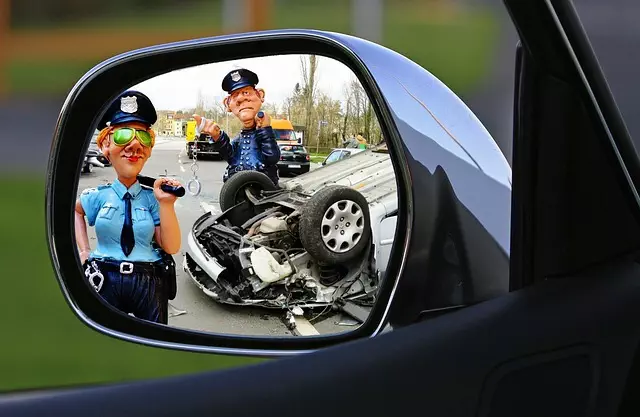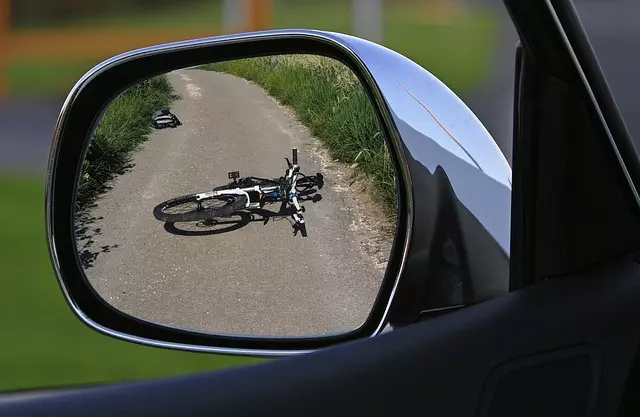In New York City, particularly in Queens, cell phone distractions significantly contribute to car accidents due to heavy traffic and bustling streets. Using mobile devices while driving impairs cognitive abilities and reaction times, increasing the risk of severe cerebral trauma for drivers and passengers. Strict regulations prohibit handheld device use behind the wheel, with penalties including fines and license points. Education campaigns promoting hands-free technologies and emphasizing the dangers of texting while driving are crucial to reducing accidents and preventing cerebral trauma in Queens.
In the bustling metropolis of New York City, where traffic congestion is a constant companion, the impact of cell phone distraction behind the wheel is a growing concern. This article delves into the intricate web of car accidents and cell phone use in NYC, exploring its effects on public safety. From understanding the immediate dangers to uncovering long-term consequences like cerebral trauma, we analyze the legal framework and present effective prevention strategies to combat this modern-day enigma.
- Understanding the Impact of Cell Phone Distraction in NYC Car Accidents
- Cerebral Trauma: A Serious Consequence of Unrestrained Driving and Mobile Use
- Legal Implications and Penalties for Handheld Device Usage While Driving in New York City
- Prevention Strategies: Promoting Safe Driving Habits Amidst Digital Distractions
Understanding the Impact of Cell Phone Distraction in NYC Car Accidents

In New York City, where bustling streets and heavy traffic are the norm, cell phone distraction has emerged as a significant contributor to car accidents. The mere act of glancing at a smartphone can divert a driver’s attention away from the road, leading to potentially fatal consequences. Studies have shown that using a mobile device while driving impairs cognitive abilities and reaction times, increasing the risk of cerebral trauma among drivers and passengers alike.
The impact of cellular distraction is profound, particularly in urban areas like Queens, where multitasking and rapid decision-making are constant demands. Drivers engaged in phone conversations or text messaging exhibit reduced awareness of their surroundings, leading to delayed braking reactions and poor judgment calls. As a result, collisions often occur at higher speeds, intensifying the risk of severe injuries, including brain damage, fractures, and spinal injuries—all of which require immediate medical attention and long-term rehabilitation.
Cerebral Trauma: A Serious Consequence of Unrestrained Driving and Mobile Use

Unrestrained driving and the use of mobile phones behind the wheel are dangerous combinations that can lead to severe consequences, including cerebral trauma in New York City. When an individual engages in activities like texting or making calls while driving, their focus is divided, leading to delayed reaction times and a higher risk of accidents. In the bustling environment of NYC, where drivers navigate through dense traffic and crowded streets, even a momentary distraction can have devastating effects.
Cerebral trauma, often referred to as brain injury, can result from motor vehicle collisions, especially when occupants are not properly secured with seatbelts. The force experienced during an accident can cause the head to strike the steering wheel, dashboard, or window, leading to bruising, bleeding, or even more severe damage. This type of trauma requires immediate medical attention and can have long-lasting effects on cognitive function, mobility, and overall quality of life for victims in Queens and across NYC.
Legal Implications and Penalties for Handheld Device Usage While Driving in New York City

In New York City, the use of handheld devices while driving is strictly regulated and comes with significant legal implications. According to state laws, drivers are prohibited from holding or operating a mobile phone, including sending text messages or accessing apps, when behind the wheel. This regulation aims to mitigate the risks associated with distracted driving, which can lead to severe accidents and even cerebral trauma in Queens and across NYC.
Penalties for violating this law include fines that can amount to hundreds of dollars, as well as points on one’s driver’s license. Repeated or extreme violations may result in license suspension or even criminal charges. It’s crucial for drivers to understand these penalties to stay safe on NYC’s bustling streets and protect themselves from legal consequences while also ensuring the safety of others, particularly those at risk of cerebral trauma.
Prevention Strategies: Promoting Safe Driving Habits Amidst Digital Distractions

In the bustling city of New York, where every street is a symphony of movement and noise, the issue of cell phone use while driving has become a pressing concern. With digital distractions ever-present, preventing car accidents becomes an uphill task. To combat this, promoting safe driving habits is paramount, especially when considering the potential for cerebral trauma among drivers and passengers.
Education and awareness campaigns play a crucial role in this effort. Encouraging drivers to adopt hands-free technologies and emphasize the dangers of texting while driving can significantly reduce accidents. Regular reminders about the severe consequences of distracted driving, including penalties and the real-life impact on families affected by cerebral trauma in Queens, can serve as powerful deterrents. Additionally, leveraging social media platforms and community events to share safe driving tips can foster a culture of responsible behavior on NYC’s roads.
Cell phone use while driving poses a significant risk, particularly in bustling New York City. The consequences of distraction can lead to severe cerebral trauma and other life-altering injuries. As we navigate this digital age, it’s crucial to understand the legal implications and adopt prevention strategies to ensure safer roads for all NYC residents. By recognizing the impact and implementing safe driving habits, we can reduce car accidents related to mobile device use and create a more secure transportation environment.
